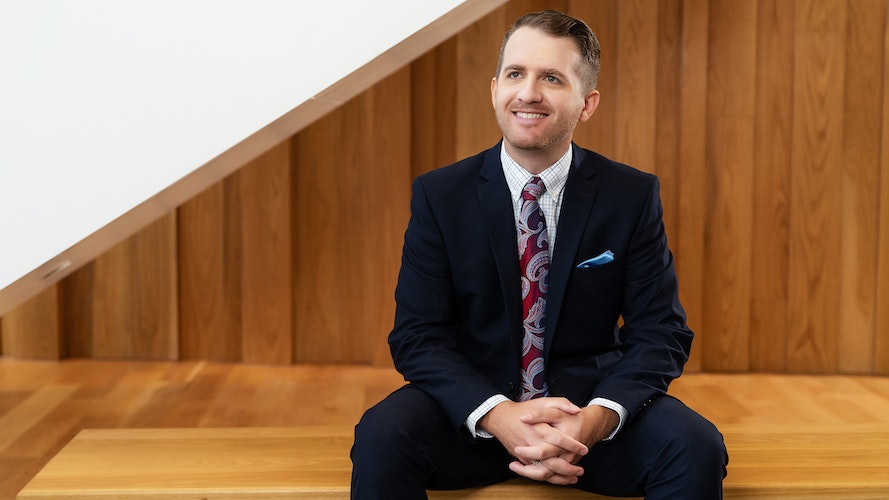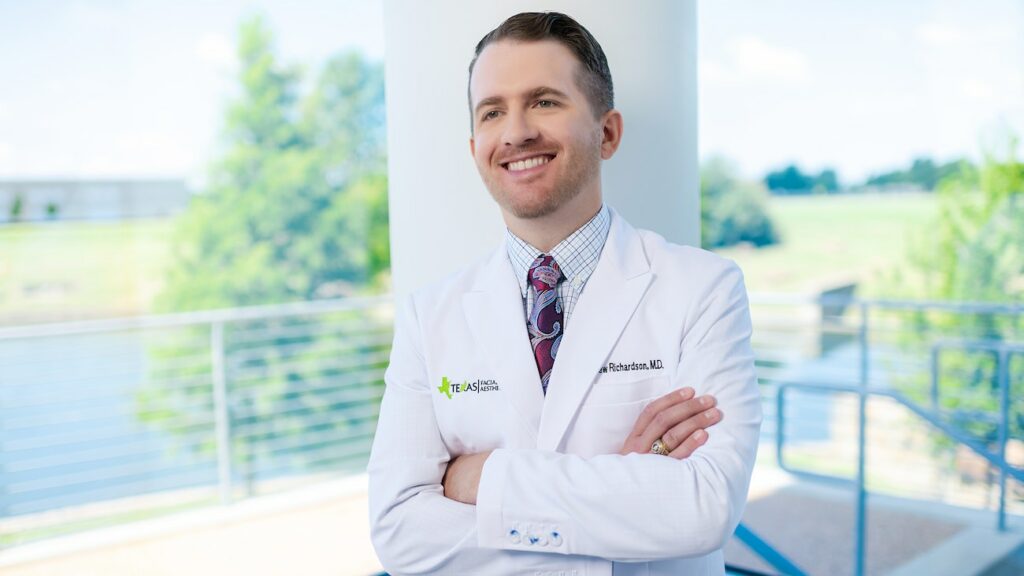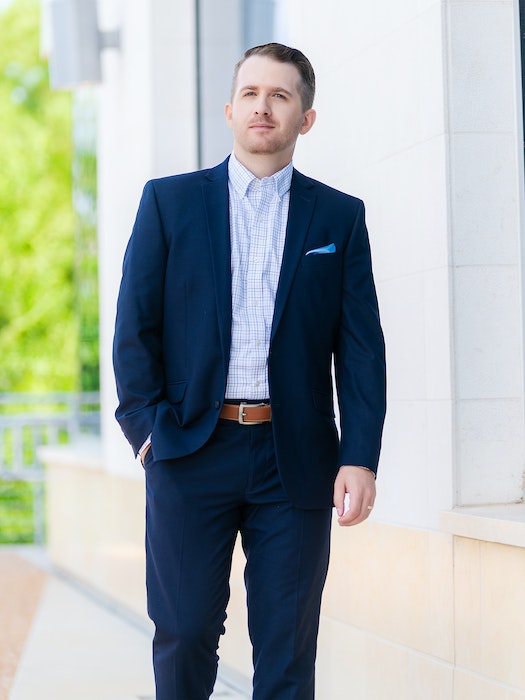Dr. Matthew Richardson Reveals How He Got Hooked on Plastic Surgery
Thespotlyte | August 04, 23

Life rarely turns out how you expect it to. And for Matthew Richardson, MD, double-board certified facial plastic surgeon in Dallas, TX, a career in plastic surgery certainly was not what he expected. “I actually went to undergraduate school to be a veterinarian, and then I changed my mind,” explains Dr. Richardson. I wanted to do something that I felt would impact people’s lives even more than that, [so] I decided to go into medicine.”
But even in medical school, Dr. Richardson still didn’t consider plastic surgery. His plan was to be an orthopedic surgeon. However, after observing a case in which a child needed nose reconstruction after a traumatic accident, Dr. Richardson became immediately enamored with the specialty. Witnessing the way in which the boy’s doctors dealt with his facial scarring was exhilarating for him. “I got hooked,” he says. “I said to myself, ‘That’s what I want to do.’”
While Dr. Richardson still has that same fervor for plastic surgery that he developed in medical school, his passion has slightly shifted over the past few years. Now, family is everything. “My first passion is my family — I have a beautiful wife and three young boys,” he shares in our interview. Naturally, Dr. Richardson prioritizes quality time with his family. And with such a busy schedule, he’s found a way to get the most out of the time they get together. “My boys and I play golf together often,” he explains. “It gives us an opportunity to bond and it requires precision, which is part of what’s required in my job, as well.”
Precision and patience are two qualities that serve Dr. Richardson well in both fatherhood and plastic surgery. And, of course, his patients — whom he considers his other family — benefit from his calm and meticulous demeanor. “I try to treat all of my patients as if they were family,” he explains. “I make recommendations based on how I would if they were one of my own family members.”
Other than his family — both at home and in the office — Dr. Richardson’s life is dedicated, of course, to the actual act of plastic surgery. Here, the graduate of the University of Texas Medical SchoolTM reveals the “life-changing procedure” he frequently performs, his favorite in-office treatment, and the hair loss supplement he recommends to patients.

Spotlyte: What’s a typical day for you in your office?
Dr. Matthew Richardson: We have a fully-equipped and accredited surgery center, so [my day] depends on if we’re doing surgery or not. My time is split about 50/50 between surgical and non-surgical procedures. We start with any post-op patients that we need to see. Then, if we have surgery, [that] will generally occupy the majority of the day. If it’s a non-surgical day — a clinic day — we will see post-op patients, do injections, consults, and non-surgical procedures, like laser treatments.
Spotlyte: What are the biggest skin challenges your patients typically come to you to treat?
MR: My two most common skin issues are facial aging — so wrinkles and sun-damaged skin — and then secondarily would be scarring, most commonly acne scarring. Acne scarring is a very difficult problem, and I try to take a multi-faceted approach to it. It may include non-surgical treatments, like microneedling or chemical peels. But some patients need even more aggressive treatment than that — they may require some surgical revision of some scars, or deeper laser resurfacing.
Spotlyte: What is your favorite procedure to perform?
MR: I love all the procedures that I do, but I’ve developed a niche for one particular procedure. Forehead reduction surgery, or hairline lowering surgery, is something uncommon that I do. It’s one of my favorites because it’s something that’s often been bothering the patient for a long time. Usually women are self-conscious about a high hairline and a big forehead, and we’re able to make a dramatic change for them in a little over an hour. That [can feel like] a life-changing procedure for them.
Spotlyte: Tell me more about your focus on hair restoration and hair loss.
MR: The number one [cause] that we see for hair loss is genetics. Certainly, other factors play a role in accelerating genetic hair loss, too. Thyroid conditions, stress, life changes, skin, or auto-immune conditions can [all] play a role. My job is to make sure that there’s nothing else that can be treated and corrected medically [outside of genetics]. For instance, an auto-immune disease or skin condition would be treated before we move into any sort of hair restoration procedures, because if we can treat the underlying cause, then that can often be the cure. Depending on what we find, we can move into options, which are both non-surgical and surgical.

Spotlyte: What are the non-surgical options for hair loss?
MR: We treat men and women differently, depending on the cause, family history, and personal history of hair loss. But, we have a lot of non-surgical options, including platelet-rich plasma (PRP) injections and nutritional supplementation. For men, I will commonly use medications like finasteride, which is an oral medication. Also, topical minoxidil [is used] for both men and women. We have low-level laser light therapy devices, like the laser cap, which are useful to stimulate growth.
[Editor’s note: As always, talk to your doctor before starting or stopping any new treatment, medication, or supplement.]
Spotlyte: What are the surgical options?
MR: Surgically, we have hair transplant procedures. Hair transplants are popular for both men and women and make up a large portion of my practice. We also have the hairline lowering procedures. I have patients who choose both options.
Spotlyte: You mentioned supplements for hair loss — which do you recommend?
MR: I carry Viviscal® Professional Dietary Supplement ($70) in my office. There are many different supplements out there — usually they’re biotin-based. In the United States, most patients have an adequate diet, so nutritional deficiencies are not a primary cause of hair loss. But having a good nutritional supplementation is helpful to optimize any results that we’re getting from a hair loss treatment regimen.
[Editor’s note: As always, talk to your doctor before starting or stopping any new treatment, medication, or supplement.]

Spotlyte: Do you personally get any in-office skin treatments?
MR: Yes, I do. One of the best things that patients can do for maintenance, and I do for myself, is a HydraFacial®. We have a HydraFacial machine in our office that is very popular with our patients.
Spotlyte: Do you get any injectables?
MR: Yes, I get injectable wrinkle reducer every three to four months. I’ve only been getting it for two to three years, and I get it in my forehead, and between my brows.
[Editor’s note: Injectable wrinkle reducers are used to temporarily smooth the look of moderate to severe wrinkles in certain areas of the face such as the forehead, frown lines, and crow’s feet. They should not be used more frequently than every three months. Like any medical treatment, they have potential risks and side effects. Be sure to talk to a licensed provider to see if they’re right for you. Have more questions? Chat with our team of trained aesthetics specialists now.] 
Spotlyte: What does your skincare routine include?
MR: I have acne-prone skin, so I use an anti-acne face wash. I like the SkinCeuticals® LHA Cleanser and I use the SkinCeuticals Blemish + Age Defense®, which is my number-one, anti-acne product that I use on my face twice a day.
Then, we always stress the importance of sunscreen, which should be part of everyone’s daily routine. Of course, it’s part of my routine as well. I like to keep it simple for myself and for my patients. I use sunscreens from SkinCeuticals and EltaMD® depending on how I’m feeling that day.
Spotlyte: Do you have a specific philosophy when it comes to aesthetic procedures?
MR: My philosophy is that everybody should look subtle, so it’s not common that I have patients coming in asking to look like someone else or to look totally different. My philosophy is to help patients look like the best version of themselves. Patients respond well to that and it’s what most are looking for. They want to look the way they feel on the inside.
Product prices may vary from the time this article was written.
Allergan® may receive commissions for purchases made through links in this article.






